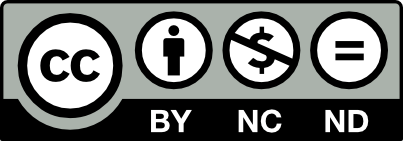This page is licensed under Creative Commons under Attribution 4.0 International. Anyone can share content from this page, with attribution and link to College MatchPoint requested.
The One Thing Parents Should Check Before Paying $80,000 or More a Year on College
Sending a student to college is one of the most meaningful investments a family can make. It is about much more than a diploma. College is where students discover new ideas, build lifelong friendships, and grow into independence. Yet the price tag has soared. At many private universities, the full cost now exceeds $80,000 or more a year.
That number gives most parents pause—and it should. Before making that kind of commitment, there is one essential thing to check: whether the college provides value that matches the investment.
What “Value” Really Means
Value does not mean reducing college to a simple price tag. It means making sure your student has the opportunities, mentorship, and support to succeed without unnecessary financial strain. Families should ask:
- Will my student have access to professors who know them well?
- Do alumni move into meaningful work or graduate programs soon after graduation?
- Will our family still have flexibility for graduate school, relocation, or other life needs after paying tuition?
This is what return on investment really means. It is less about the cost of a dorm room and more about the freedom and opportunity that follow graduation.
Why This Matters
The data shows that graduates from The University of Michigan, University of Georgia, and The University of Texas at Austin step into the same industries as peers from ultra-competitive colleges. These flagships are known for strong outcomes and are often significantly less expensive for in-state families.
Private universities with robust merit aid also change the equation. Tulane University, Southern Methodist University, and Texas Christian University all award substantial scholarships to attract top students. Those offers can bring the cost of attendance down by $20,000–$40,000 per year, dramatically shifting a family’s financial picture while still delivering strong academic and professional opportunities.
Case Study: Daniel’s Experience
Daniel faced the choice many families know well. One of his options was a nationally known private university with a total cost above $80,000 per year. He was also admitted to Southern Methodist University with a half-tuition merit scholarship.
His parents initially worried that passing up the more famous name might limit his opportunities. Yet at SMU, Daniel found close mentorship from faculty, completed two internships through the Dallas business community, and graduated debt-free. His first job paid him the same salary as a classmate from the more expensive university, but Daniel had a major advantage—he could relocate for work without loans weighing him down.
Examples of Schools Offering Value
Parents often ask, “Which schools should we look at for both opportunity and affordability?” Here are a few examples:
- University of Michigan (Ann Arbor) – A flagship public with national reach and a long track record of launching graduates into competitive careers.
- Tulane University (New Orleans) – Known for generous merit aid that often cuts the sticker price dramatically.
- Texas A&M University (College Station) – The Aggie network and research opportunities make it a consistent value, especially for engineering and business.
- University of Georgia (Athens) – The HOPE and Zell Miller Scholarships create one of the strongest in-state values in the country.
- Texas Christian University (Fort Worth) – Offers substantial scholarships and combines academics with a vibrant campus culture.
- University of Denver – Provides reliable merit awards and strong career pathways in business, policy, and international studies.
- Southern Methodist University (Dallas) – Significant scholarships plus career connections in the Dallas business hub.
- Rice University (Houston) – Consistently among the most generous in meeting financial need, often bringing the cost below many peers.
- University of Texas at Austin – A nationally respected flagship with affordable in-state tuition and extensive alumni networks.
This list shows that families do not have to choose between reputation and affordability. Many respected universities combine quality with financial flexibility.
How Parents Can Weigh the Choice
Families can take a thoughtful approach by looking at both opportunity and affordability:
- Look at outcomes, not just rankings. Explore where graduates work, what industries they enter, and which graduate programs they attend.
- Consider net price, not sticker price. Schools like Tulane, TCU, and the University of Georgia often bring down their $80,000 sticker price significantly with aid.
- Ask about student experience. Is the school known for approachable professors, strong mentoring, and community life? Those factors shape student happiness just as much as career outcomes.
The Bigger Picture
No family wants to see their student weighed down by debt that limits their future. The real return on investment is not only about a paycheck. It is the flexibility to pursue graduate school, accept a dream job in another city, or take time to explore opportunities without financial panic.
That is why the one thing to check before paying $80,000 or more a year is whether the college offers both meaningful experiences on campus and financial flexibility after graduation. Families who weigh cost and opportunity together give their student the freedom to thrive in the years ahead.



